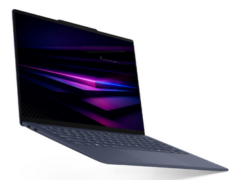- Home
- Mobiles
- Mobiles Reviews
- Redmi Note 9 Review
Redmi Note 9 Review
The Redmi Note 9 is priced starting at Rs. 11,999 in India

Redmi Note 9 sports a 6.53-inch FHD+ display
Xiaomi made a huge splash in the Indian market earlier this year with the Redmi Note 9 Pro and the Redmi Note 9 Pro Max. These two smartphones had impressive specifications at competitive prices, but the excitement has been short lived, as they have both become more expensive now thanks to rupee-dollar fluctuations and a GST hike. Now, Xiaomi has launched the Redmi Note 9 which comes in at a sub Rs. 15,000 price. It sports powerful internals compared to its predecessors, but is it good value for money? I'm reviewing the new Redmi Note 9 to find out.
Redmi Note 9 design: Same but different
Redmi introduced its Aura Balance design with the Redmi Note 9 Pro series, and the Redmi Note 9 gets it by default. It looks a lot like its siblings, but unlike them the Redmi Note 9 does not have a side-mounted fingerprint scanner. Instead, it has a more traditional rear-mounted one, positioned right below the rear camera module.
Xiaomi has matched the colour of the fingerprint scanner with the glossy finish of the camera module, which makes it hard to spot from a distance. I prefer a rear-mounted fingerprint scanner, and the one on the Redmi Note 9 is well positioned. Xiaomi has launched the smartphone in three colours: Pebble Grey, Arctic White, and Aqua Green. I had an Arctic White unit for this review, and it has a nice gradient at the back.
The second big change on the Redmi Note 9 is the hole-punch display. The front-facing camera is in the upper left corner rather than in the centre, like the Redmi Note 9 Pro (Review) and Redmi Note 9 Pro Max (Review). The hole isn't distracting. If you hold the phone in landscape, chances are you won't notice it at all. What you will notice are the bezels, which are fairly thick, but I would say that this is acceptable at this price point.
![]()
The Redmi Note 9 has a hole-punch design
Xiaomi has gone with a big display for the Redmi Note 9, and so this phone needs a slight shuffle in the hand to reach the top with one hand. The power and volume buttons are well positioned and easy to hit. Just like most other Redmi phones, the Note 9 has an IR emitter on the top. This can be used to control your television or air conditioner, and could come in handy.
The phone is 8.9mm thick and weighs 199g. It is slightly on the heavier side compared to some of the other smartphones in this price range. Xiaomi says it has used a P2i nano-coating on the device with rubber seals on the ports for a bit of protection from exposure to liquids. The main reason for the weight could be the big battery that this phone packs. Xiaomi has also bundled a 22.5W charger in the box (though charging is currently limited to 18W - more on that later).
Redmi Note 9 specifications and software: New hardware, same old experience
The Redmi Note 9 is now the entry point for the Note 9 series, and Xiaomi has picked the MediaTek Helio G85 for this model. It is an octa-core processor with two Cortex-A75 cores clocked at 2GHz, and six Cortex-A55 cores clocked at 1.8GHz. For graphics, it has an ARM Mali-G52 GPU clocked at 1GHz.
The Redmi Note 9 has a 6.53-inch display with a full-HD+ resolution (1080x2340 pixels) and Corning Gorilla Glass 5 for protection. There are three variants of the Redmi Note 9: 4GB of RAM with 64GB of storage, 4GB of RAM with 128GB of storage, and 6GB of RAM with 128GB of storage. These variants are priced at Rs. 11,999, Rs, 13,499, and Rs. 14,999 respectively at launch, and I had the top variant for this review.
The Redmi Note 9 offers expandable storage with a dedicated microSD card slot. It has two Nano-SIM slots and supports dual 4G as well as VoLTE. There's Bluetooth 5, Wi-Fi 802.11 n, and four satellite navigation systems. The battery capacity is 5,020mAh. The Redmi Note 9 is also capable of 9W reverse charging through the USB Type-C port.
![]()
Redmi Note 9 runs MIUI 11 on top of Android 10
In terms of software, nothing much is new. The Redmi Note 9 runs MIUI 11 on top of Android 10 and my unit had the recent June security patch. The phone does come with a fair amount of bloatware preinstalled, and suggests that you download some more during the setup process. It also shows ads on the lockscreen, an option that is enabled by default, but I disabled it while setting up the phone. Some of the apps that come preinstalled on the phone are Mi Store, Osom Rummy, Helo, Mi Community, Zili, and Mi Pay. Helo and Mi Community have been banned by the Government of India but were preinstalled on my review unit; these apps did not work, though.
The UI is very similar to what I have gotten used to on other Xiaomi smartphones. You get traditional three-button navigation by default but you can swap this for swipe gestures. There are other useful features such as Game Turbo, which clears RAM, gives higher bandwidth priority to games running in the foreground, and restricts gesture navigation while gaming. It also offers the option to accept incoming calls in hands-free mode, and you can customise touch response for each game.
I did see spammy notifications from preinstalled apps such as Mi Video and Get Apps, and this did dampen the overall user experience.
Redmi Note 9 performance: Capable hardware
The performance of the Redmi Note 9 gave me no reason to complain. The MediaTek Helio G85 is a capable processor and could handle my daily tasks easily. App loading times were acceptable, and with 6GB of RAM, I could switch between different apps easily.
I found the display on the Redmi Note 9 to be decent. It has good viewing angles and does get bright enough when required. You also get the option to tweak the colour output. However, it isn't as punchy as the AMOLED display on the Samsung Galaxy M21 (Review). I found the rear-mounted fingerprint scanner to be quick to unlock the smartphone. Face recognition was also fast and convenient.
![]()
You get a dedicated microSD card slot on the Redmi Note 9
I ran a couple of benchmarks on the Redmi Note 9 to see how the MediaTek Helio G85 fares compared to the other processors. In Antutu, the Redmi Note 9 returned 200,489 which puts it close to the Realme Narzo 10 (Review), which is priced similarly. In Geekbench 5's single-core and multi-core tests, it scored 356 and 1,325 points respectively. It also managed 38fps, 14fps, and 8fps in GFXBench's T-Rex, Manhattan 3.1, and Car Chase graphics benchmarks respectively.
The Redmi Note 9 could run games such as PUBG Mobile and Asphalt 9: Legends without any issues. In PUBG Mobile, the phone defaulted to the Medium settings but I could bump it up to High without too much of a drop in performance. However, the phone got warm to the touch after playing for 20 minutes. I also noticed nearly a 10 percent battery drop during this time. Asphalt 9 ran at the default settings, and I only noticed occasional stutter on a few tracks.
I found the battery life of the Redmi Note 9 to be quite good. It could easily go beyond a day and a half before needing to be plugged in. Even if you are a heavy user, the 5,020mAh battery should last you over a day. It managed to last for 15 hours, 45 minutes in our HD video loop test.
![]()
The Artic White colour variant has an eye-catching gradient finish
The advertised Wattage of the charger included with the Redmi Note 9 has caused a minor controversy in the days following its launch. The Redmi Note 9 comes with a 22.5W charger in the box, but the device is currently capped at 18W for charging. Xiaomi told Gadgets 360 that the Redmi Note 9 currently has a “software lock” on how much power it will pull in, and that it needs further lab and field testing which hasn't been possible because of the lockdown. Xiaomi says it plans to release a software update in the future that will allow the Redmi Note 9 to charge at 22.5W.
Currently, the phone charges to 29 percent in 30 minutes and 60 percent in an hour. Charging the device completely takes a little over two hours. This should go down if or when Xiaomi unlocks the full charging speed.
Redmi Note 9 cameras: Not so good at night
The Redmi Note 9 has a quad-camera setup consisting of a 48-megapixel primary camera, 8-megapixel ultra-wide-angle camera, 2-megapixel macro camera, and a 2-megapixel depth sensor. For selfies, it has a 13-megapixel camera in the front. The camera app is very similar to what I have seen on other Redmi phones.
Apart from the usual shooting modes, the app has a Pro mode for both photos as well as video, which lets you manually control different parameters. It also has a Document mode that lets you crop photos and convert them to Black and White right from the viewfinder. With apps such as Camscanner banned, this will come in handy.
Redmi Note 9 daylight camera sample (tap to see full-size image)
Redmi Note 9 daylight wide-angle camera sample (tap to see full-size image)
The Redmi Note 9 uses AI, which is quick to detect the content of scenes and set the camera up accordingly. In daylight, the phone delivers good shots, and text at a distance is legible on zooming in. However, the AI tends to sharpen photos a bit too much for my liking. Photos taken at the full 48-megapixel resolution had better details and weren't sharpened as much. There was a noticeable drop in quality in photos taken with the wide-angle camera.
Redmi Note 9 close-up camera sample (tap to see full-size image)
Redmi Note 9 macro camera sample (tap to see full-size image)
For close-ups, the AI was quick to recognise the subject, but occasionally had trouble with focus. Photos were crisp and had a natural bokeh effect. There is a Pro Colour option that bumps up the contrast in the output. The macro camera lets you get very close to a subject and manages a crisp shot in favourable light.
Redmi Note 9 portrait sample (tap to see full-size image)
Portrait mode managed good separation between the subject and background. Edge detection was also very good. I couldn't find a way to set the level of blur before taking a shot, but the device did allow me to adjust the level of beautification.
Redmi Note 9 low-light camera sample (tap to see full-size image)
Redmi Note 9 Night Mode camera sample (tap to see full-size image)
In low light, the output was decent, but fine grain was visible on zooming in. The camera app managed to keep noise down. It takes longer to save a shot in Night Mode, forcing you to hold still for that time, but there was barely any difference in quality when using it.
Redmi Note 9 selfie portrait sample (tap to see full-size image)
Redmi Note 9 low-light selfie sample (tap to see full-size image)
Selfies taken in daylight were crisp and had good details. You can take portrait shots using the selfie camera as well, but here I couldn't set the level of blur. The Redmi Note 9 did manage good edge detection. The quality dipped in low light.
Video recording tops out at 1080p for the primary shooter. The Redmi Note 9 managed decent output, and did stabilise footage well. In low light, there was a noticeable shimmer, as the phone tried to stabilise footage.
I found the camera performance of the Redmi Note 9 to be good in daylight, but it was strictly average in low light.
Verdict
The Redmi Note 9 starts at Rs. 11,999 in India which is a lot higher than the Redmi Note 8 (Review), which had managed to slot in under the Rs. 10,000 mark. The recent GST hikes and the weaker Rupee are said to be the main reasons behind the higher pricing. The base variant of the Redmi Note 9 does offer decent value with its full-HD+ display, powerful MediaTek Helio G85 SoC, and 4GB of RAM. It also delivers good battery life thanks to the big 5,020mAh battery.
However, I can't say the same about the top-end variant I reviewed. At Rs. 14,999, it competes with some powerful phones in the sub-Rs 15,000 segment such as the Realme 6 (Review), Poco M2 Pro (Review), and even the Redmi Note 9 Pro (Review). These models offer improved performance and better features than the Redmi Note 9, making this variant a little hard to recommend.
Is Redmi Note 9 the perfect successor to Redmi Note 8? We discussed this on Orbital, our weekly technology podcast, which you can subscribe to via Apple Podcasts, Google Podcasts, or RSS, download the episode, or just hit the play button below.
Catch the latest from the Consumer Electronics Show on Gadgets 360, at our CES 2026 hub.
Related Stories
- Samsung Galaxy Unpacked 2025
- ChatGPT
- Redmi Note 14 Pro+
- iPhone 16
- Apple Vision Pro
- Oneplus 12
- OnePlus Nord CE 3 Lite 5G
- iPhone 13
- Xiaomi 14 Pro
- Oppo Find N3
- Tecno Spark Go (2023)
- Realme V30
- Best Phones Under 25000
- Samsung Galaxy S24 Series
- Cryptocurrency
- iQoo 12
- Samsung Galaxy S24 Ultra
- Giottus
- Samsung Galaxy Z Flip 5
- Apple 'Scary Fast'
- Housefull 5
- GoPro Hero 12 Black Review
- Invincible Season 2
- JioGlass
- HD Ready TV
- Laptop Under 50000
- Smartwatch Under 10000
- Latest Mobile Phones
- Compare Phones
- Motorola Signature
- Vivo Y50e 5G
- Vivo Y50s 5G
- Realme 16 Pro+ 5G
- Realme 16 Pro 5G
- TCL Nxtpaper 70 Pro
- OPPO A6 Pro 5G
- Honor Power 2
- Lenovo Yoga Slim 7x (2025)
- Lenovo Yoga Slim 7a
- Realme Pad 3
- OPPO Pad Air 5
- Xiaomi Watch 5
- Huawei Watch 10th Anniversary Edition
- Acerpure Nitro Z Series 100-inch QLED TV
- Samsung 43 Inch LED Ultra HD (4K) Smart TV (UA43UE81AFULXL)
- Asus ROG Ally
- Nintendo Switch Lite
- Haier 1.6 Ton 5 Star Inverter Split AC (HSU19G-MZAID5BN-INV)
- Haier 1.6 Ton 5 Star Inverter Split AC (HSU19G-MZAIM5BN-INV)


















